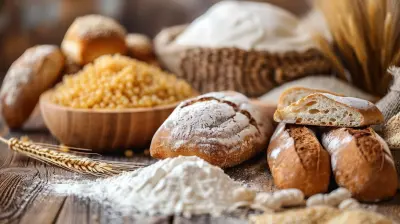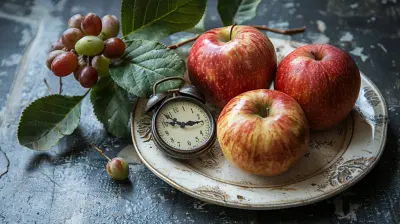Hidden Sources of Gluten You May Be Missing in Your Diet
29 August 2025
Let’s be real—going gluten-free isn't just a wellness trend anymore, it’s become a full-on lifestyle change for many people. Whether you're doing it because of celiac disease, gluten sensitivity, or just because you want to feel less bloated and more energized, you know how tricky it is to keep wheat, barley, and rye out of your meals.
You’ve probably already ditched the obvious culprits like pasta, bread, and pastries. But here’s the kicker: gluten has a sneaky way of showing up in places you'd never expect. Seriously, even seasoned gluten-free warriors miss a few of these. So if you’ve been eating clean and still feeling “off,” one of these hidden sources of gluten might be sabotaging your efforts.
In this guide, we’re digging deep into those mysterious, often-overlooked gluten traps that could be lingering—right under your nose.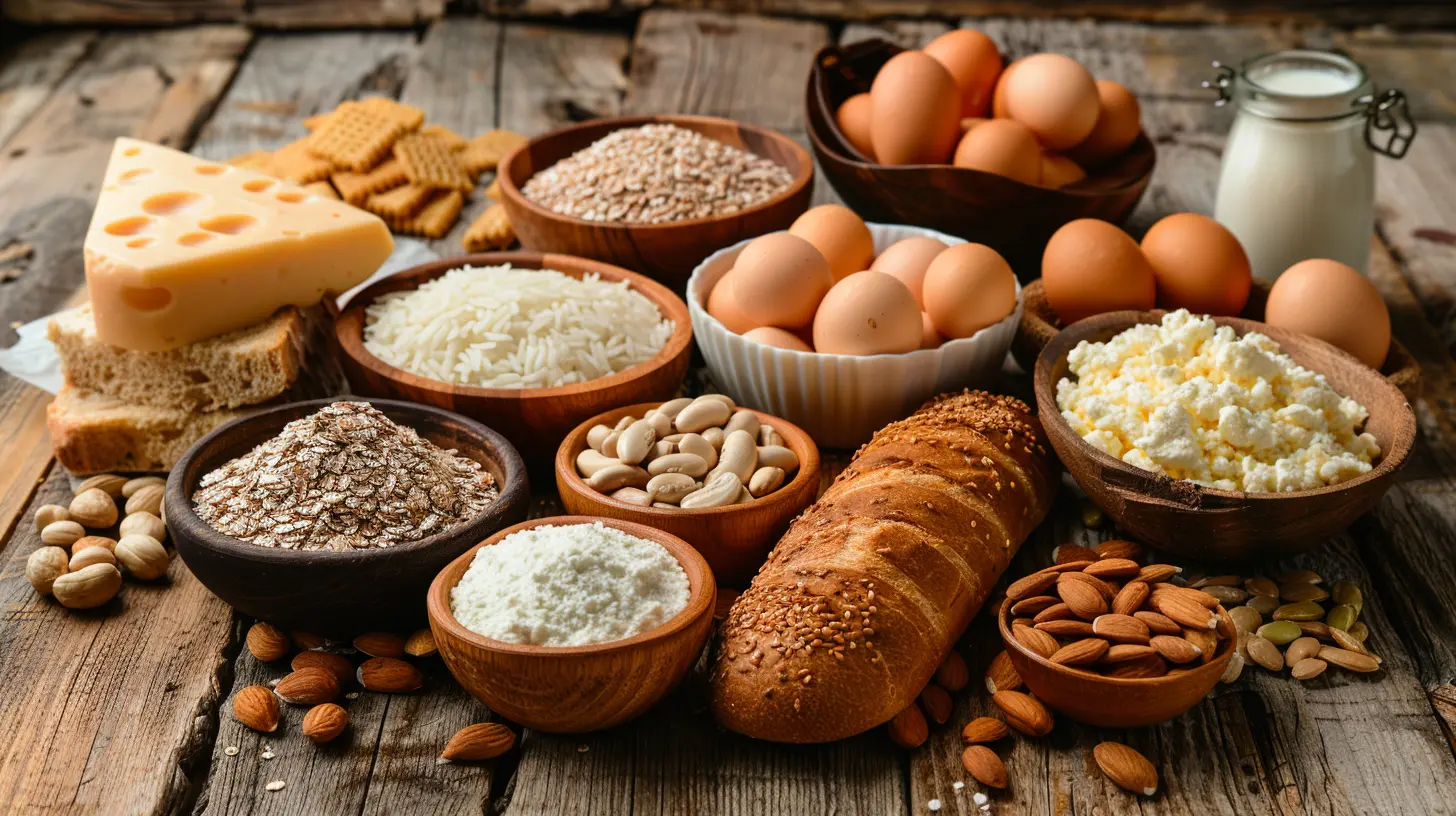
Why Going Gluten-Free Is Tougher Than It Looks
First off, let’s talk about why this gluten-free journey is such a minefield. Unlike common allergens like peanuts or dairy, gluten doesn’t always make its presence obvious. It masquerades under names that sound more like something from a chemistry textbook—hydrolyzed vegetable protein, anyone?Adding to that confusion, gluten is often used as a thickener, stabilizer, or even just as a filler in processed foods. It’s hiding in sauces, sneaking into snacks, and even crashing your health supplements like an unwanted party guest.
So, where is gluten hiding? Let’s break it down.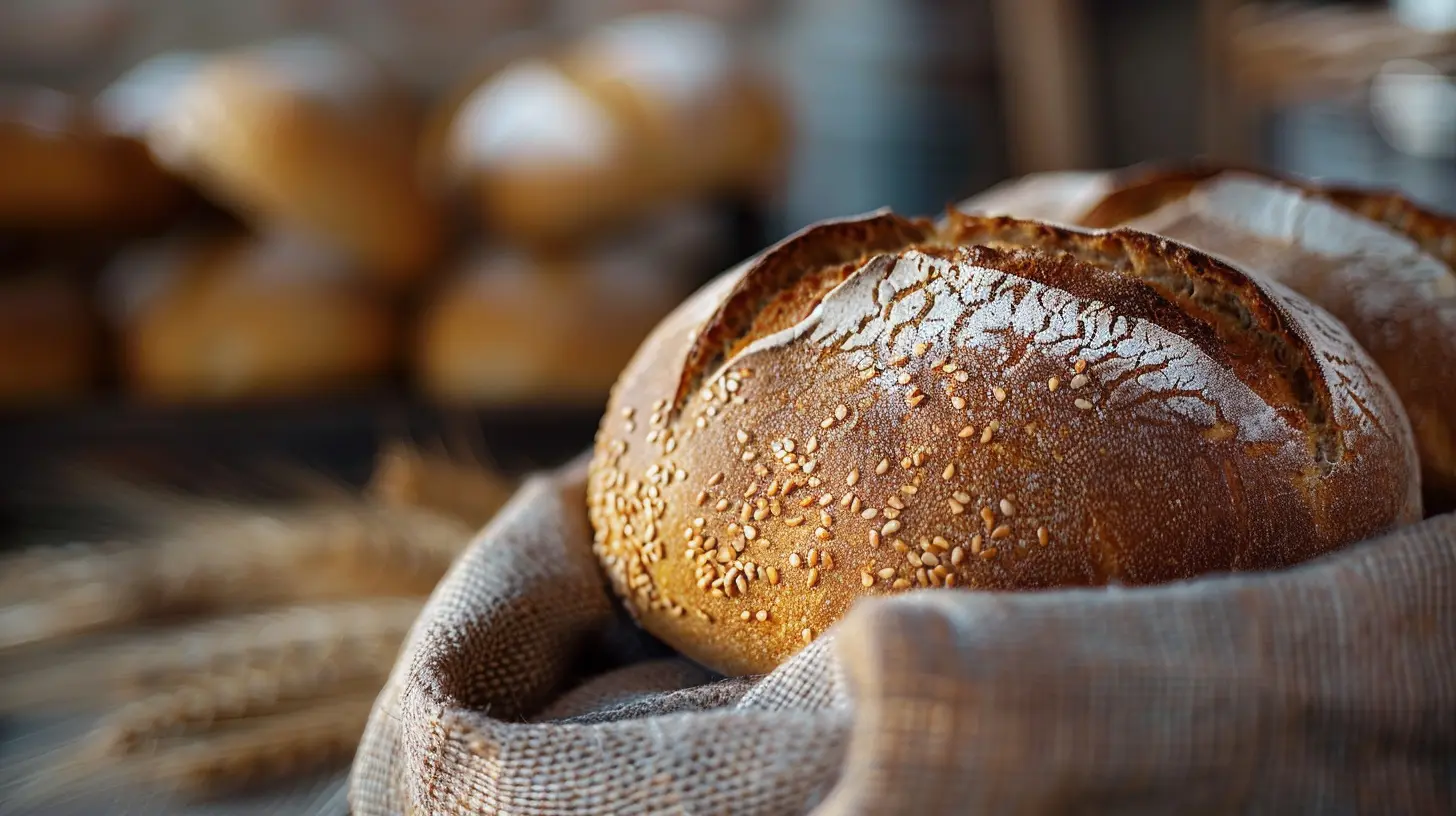
1. Sauces, Dressings & Marinades – A Liquid Trap
Let’s start with your condiments. You probably think your ketchup, salad dressing, or teriyaki sauce is safe, right? Not so fast.Many sauces and dressings contain “modified food starch” or soy sauce—both of which often contain wheat. Soy sauce in particular is one of the biggest offenders because traditional versions are brewed using wheat. So, that sushi night? Yeah, gluten might’ve been right there in your dipping bowl.
Pro Tip: Always check for “gluten-free” labeling on sauces, or opt for tamari instead of soy sauce—it’s typically gluten-free and tastes just as good.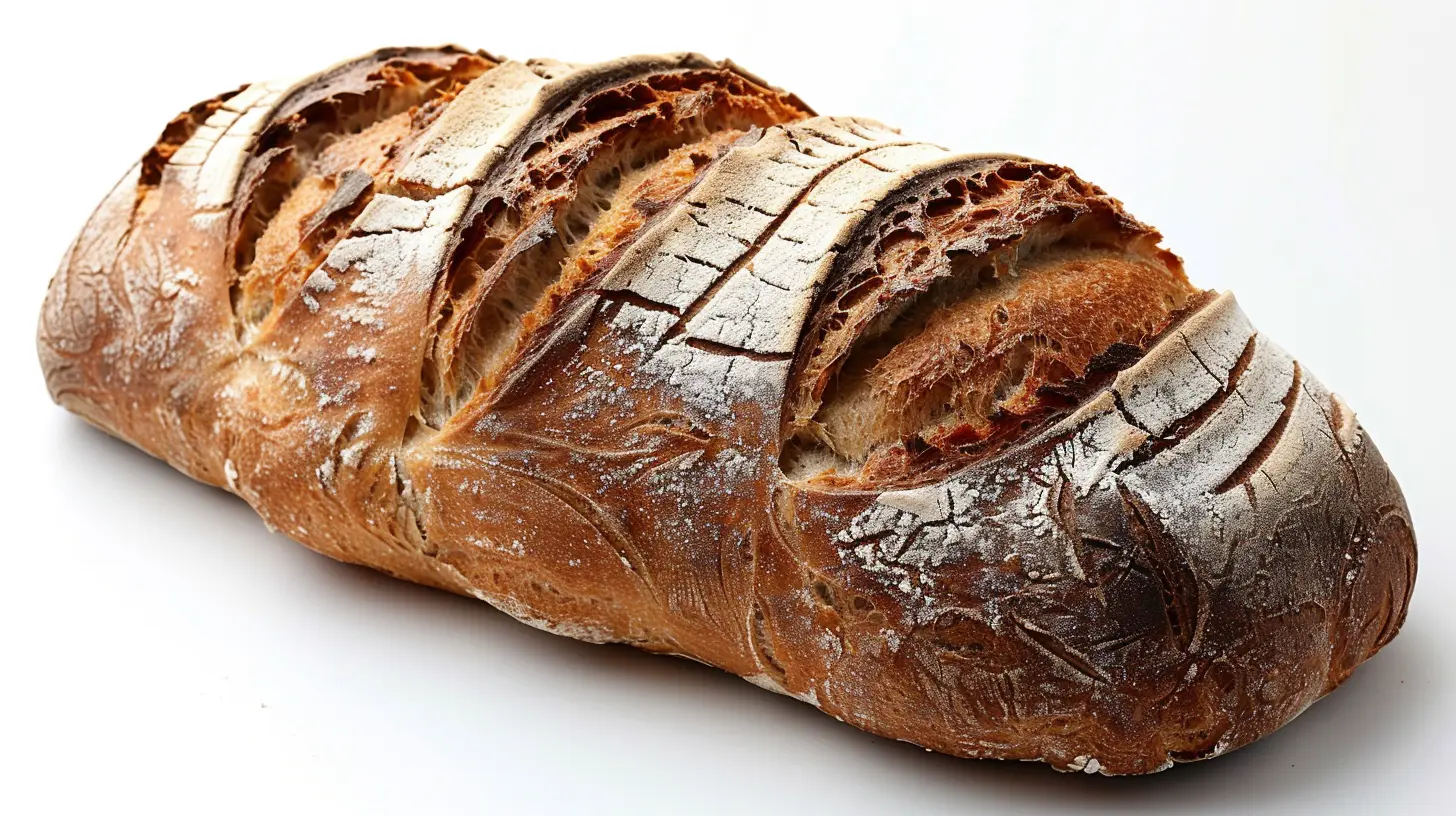
2. Processed Meats – Not Just Steak and Sausages
You might think that meat = gluten-free. But when it comes to anything processed—think deli meats, hot dogs, sausages—it’s another story.These products often use fillers and binders to improve texture and shelf-life. Guess what’s commonly used for that? Yup, gluten. And here’s a twist—some brands even dust their meats with flour to prevent sticking.
Check the Label: Look out for terms like "textured vegetable protein" or "natural flavors." When in doubt, reach for certified gluten-free options.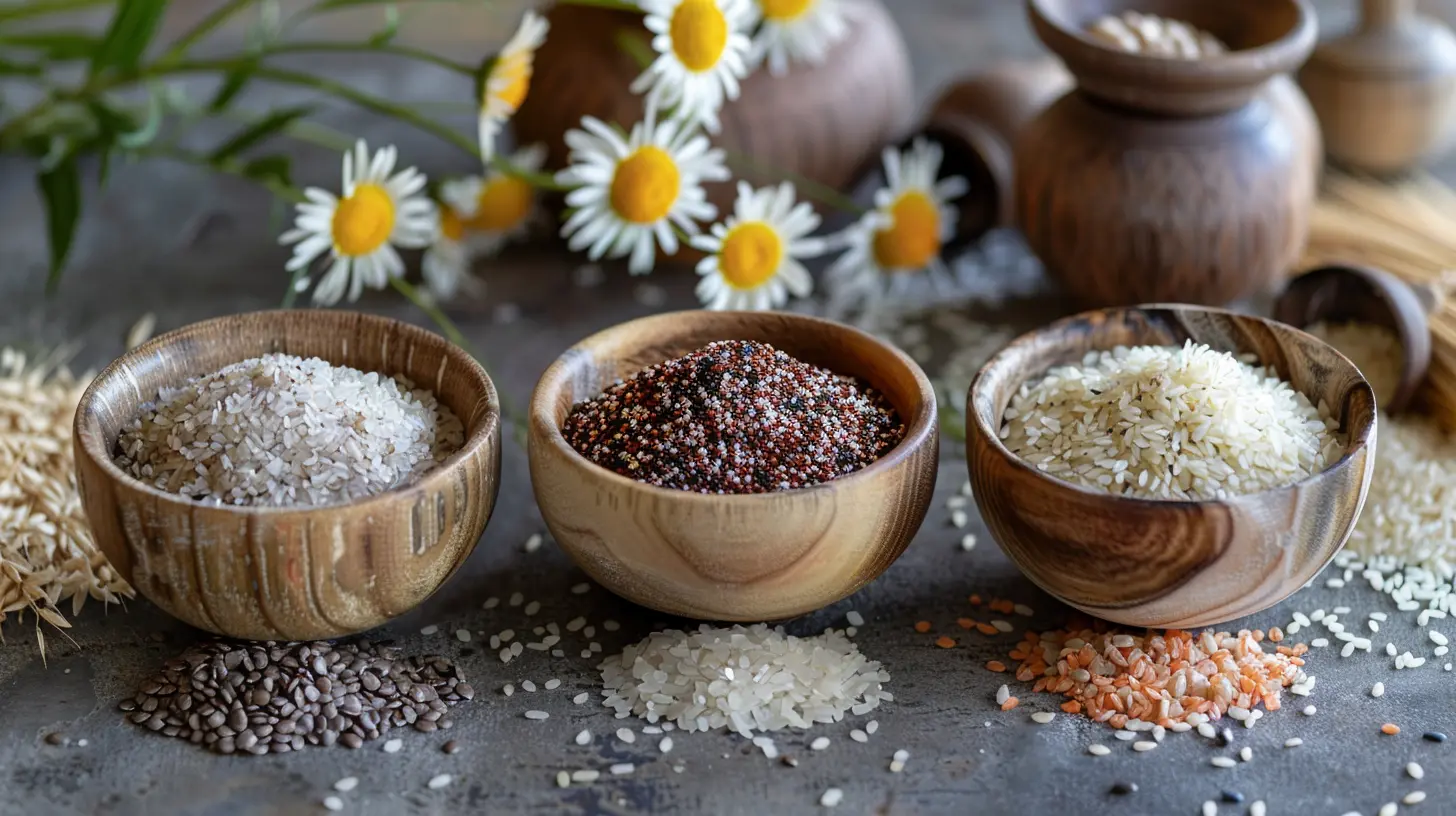
3. Oats – The Tricky "Gluten-Free" Grain
Oats themselves don’t contain gluten. But the problem? Cross-contamination. Oats are often processed in facilities that also handle wheat, so gluten can sneak in during production.That morning bowl of "healthy" oatmeal? It could be a hidden gluten bomb.
Solution: Only buy oats that are specifically labeled “certified gluten-free.” Trust me, it’s worth the extra couple of bucks.
4. Medications and Supplements – The Unexpected Sources
This one surprises a lot of people. Yep, even your vitamins and over-the-counter meds may contain gluten. It’s often used as a binder or filler.Pharmaceutical companies aren’t required to list gluten content, either—so you could be unknowingly ingesting small amounts every day.
What to Do: Ask your pharmacist or check with the manufacturer. Or, better yet, opt for gluten-free verified supplements.
5. Flavored Coffees, Teas & Beverages – A Sip of Trouble
That pumpkin spice latte or chai blend you love so much? It might come with a side of gluten. Flavored coffee syrups and teas often use barley malt for flavoring, which contains gluten.Even pre-mixed alcoholic beverages can be questionable—especially beer (unless marked gluten-free), which is traditionally made from barley or wheat.
Tip: When in doubt, stick to single-origin coffee, loose-leaf teas, or certified gluten-free drinks.
6. Personal Care Products – Gluten in the Bathroom?
Believe it or not, some lipsticks, lotions, shampoos, and even toothpaste can contain gluten. While this isn’t always a big deal for everyone, those with celiac disease or severe sensitivities need to be extra cautious—especially with anything that goes on the lips or in the mouth.Golden Rule: If you’re sensitive enough to need a gluten-free diet, you probably want gluten-free skincare and cosmetics, too.
7. French Fries & Fried Foods – One Word: Cross-Contamination
Potatoes are safe, right? Yes, until they’re dunked in a shared fryer with breaded chicken nuggets, onion rings, and battered fish.Restaurants often use the same oil for all their fried items, turning otherwise gluten-free fries into a gluten-fried disaster.
Pro Move: Ask if the fries are cooked in a dedicated fryer. If the staff isn’t sure, skip it.
8. Imitation Meats & Plant-Based Proteins – Vegan Doesn’t Mean Gluten-Free
Plant-based eating is growing fast—but many vegan meat alternatives use “seitan,” which is literally just wheat gluten. Even beyond seitan, textured vegetable protein (TVP) or wheat-based binders are used in many veggie burgers and faux-meat products.Rule of Thumb: Always read labels carefully, even on vegan products. "Plant-based" doesn’t mean "gluten-free."
9. Gravies, Soups & Broths – A Comfort Food Culprit
Many gravies and soups are thickened with flour. Even bouillon cubes and canned broths can contain malt flavoring or yeast extract made from barley.Let’s be honest, nothing beats a warm bowl of soup when you’re under the weather—but if it’s not gluten-free, it might do more harm than good.
Alternative: Make your own using cornstarch or arrowroot as a thickener. And check for gluten-free certifications on store-bought options.
10. Candy, Chocolate & Gum – Sweet, But Sneaky
Surprise! Your sweet tooth might be working against you. Some candies, especially ones with crispy bits or malt flavoring (like malt balls), contain gluten. Same goes for licorice and certain gums, which may use wheat flour to maintain texture.Best Bet: Stick to known gluten-free brands or check the label religiously. It’s better than an unexpected stomach ache.
11. Ice Creams & Yogurts – Dessert Dangers
Plain ice cream? Usually safe. But when you venture into flavors like cookies and cream, cake batter, or anything with swirls, chunks, or crumbles—be careful.Even some “natural” flavorings may have hidden gluten, especially in yogurt parfaits or pre-packaged options with granola.
Keep It Simple: Choose brands that mark their gluten content clearly or stick to plain varieties and DIY your toppings.
12. Pre-Seasoned Rice & Quinoa Mixes – Not All Grains Are Pure
Here’s a curveball: rice and quinoa are naturally gluten-free. But when they come with spices and seasonings in pre-packaged mixes, gluten can creep in through added flavorings, preservatives, or thickeners.Watch for: “Natural flavors,” “yeast extract,” or “spices” on the label—they sometimes hint at hidden gluten.
13. Restaurant Foods – Trust, But Verify
Even when a meal seems gluten-free, cross-contact during preparation can ruin it. That grilled chicken wrap without the wrap? If it’s cooked on the same surface as pancakes or breaded items, you’re at risk.Unfortunately, not all waitstaff or kitchens are trained in serious gluten safety.
Be Bold: Don’t hesitate to ask questions or request a clean pan. Your gut will thank you.
How to Outsmart Gluten Like a Pro
Okay, so now you might be feeling overwhelmed—and that’s totally normal. Gluten really does show up in the most unexpected places. But the good news is that you're not powerless.Here are a few helpful tips to stay one step ahead:
- Read Labels Religiously: If you don’t recognize an ingredient, look it up. Don’t assume.
- Look for Certified Gluten-Free Products: That stamp makes a world of difference.
- Cook More at Home: It’s the best way to control what’s in your food.
- Join a Gluten-Free Community: Online forums, Facebook groups, or even local meet-ups can offer real-life tips and brand recommendations.
- Keep a Symptom Diary: If something makes you feel off, jot it down. Patterns usually emerge quickly.
Final Thoughts: You’ve Got This
Living gluten-free doesn’t have to feel like a full-time job. Yes, there are plenty of hidden sources of gluten out there, but once you learn the ropes, it gets a lot easier. Knowledge really is your superpower here.Think of it like navigating a maze. The first few turns are tricky, but eventually, you memorize the paths. Soon enough, dodging hidden gluten will feel like second nature.
So, if you’ve been wondering, “Why am I still feeling bad even on a gluten-free diet?”—maybe it's one of these sneaky sources that slipped past your radar. But now that you're armed with this info, you're already way ahead of the game.
Stay curious, stay label-savvy, and keep nourishing yourself like the wellness warrior you are.
all images in this post were generated using AI tools
Category:
Gluten FreeAuthor:

Angelo McGillivray
Discussion
rate this article
1 comments
Colton Barrett
Gluten lurks in the most unexpected places—think beyond bread and pasta! Sauces, processed foods, and even cosmetics can betray your gluten-free efforts. Don't let hidden sources sabotage your health goals. Stay vigilant and educate yourself—your well-being is worth the effort!
September 15, 2025 at 3:38 AM

Angelo McGillivray
Absolutely! Staying informed about hidden sources of gluten is crucial for maintaining a gluten-free lifestyle. Your health is worth the extra effort!

